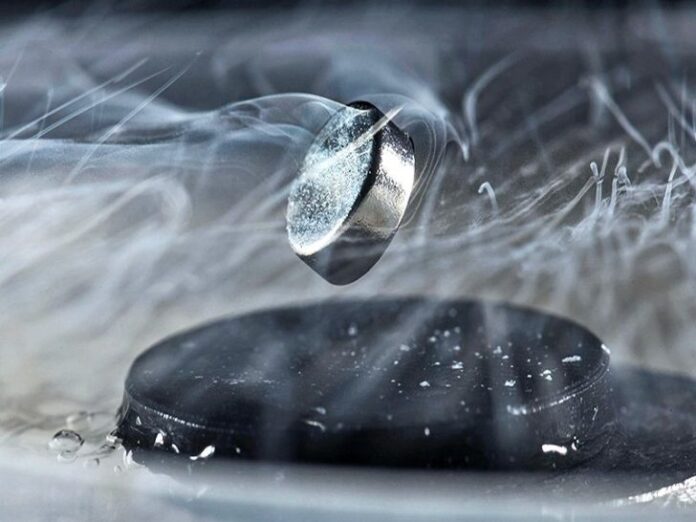
We are certainly living through some of the most exciting times yet in the new millennium. As if the unimaginable productivity boost from the upcoming age of AI was not enough, we are now at the cusp of an epochal technological transformation, all thanks to the much-touted room-temperature superconductor candidate, LK-99.
For the benefit of those who might not be aware, a superconductor offers virtually no electrical resistance to the passage of an electric current, thereby preventing the loss of precious energy as heat. Up till now, select materials could only exhibit superconductivity at ultra-low temperatures. However, should LK-99 manage to pass due scientific scrutiny, it will unleash a transformational wave that has not been seen since the industrial revolution. If we are able to remove electrical resistance, and that too at ambient temperature and pressure, everything from how we transmit electricity to how computers and consumer electronics are made will undergo sweeping efficiency gains along with a significant boost to the miniaturization of cutting-edge technology.
LK-99: Understanding all of the Brouhaha

As we noted in an earlier post, a research team hailing from Korea University recently claimed that LK-99, a gray-black compound of lead, copper, phosphorus, and oxygen, formally known as copper-substituted lead phosphate apatite, exhibited superconductivity characteristics at ambient temperature and pressure.
In two key pre-print studies (here and here), the researchers claim that as copper cations substitute lead cations within the insulating structure of lead phosphate, stress-induced structural shrinkage occurs, which creates “superconducting quantum wells (SQWs)” within the structure. More importantly, the unique construct of LK-99 allows these structural distortions to perpetuate, thereby giving rise to room-temperature superconductivity characteristics.
As per the researchers’ claims, LK-99’s electrical resistivity changes with the temperature gradient, remaining at zero (with some noise) up till 60 degrees Celsius, then progressively increasing between 60 degrees Celsius and 90 degrees Celsius, showing no change with temperature between 90 degrees Celsius and 126.85 degrees Celsius, and finally undergoing Insulator-to-Metal Transition (IMT) at temperatures exceeding 126.85 degrees Celsius.
Apart from the two original studies, another paper – submitted on the 31st of July – attempted to perform density functional theory calculations on LK-99, managing to identify “correlated isolated flat bands at the Fermi level,” which are a hallmark of superconducting crystals.
Why is the Betting Market Supposedly Skeptical of LK-99?

As shown in the snippet above, a betting contract has now been opened at Polymarket, allowing users to place bets on the prospects of LK-99 passing scientific scrutiny. Currently, bettors are only giving a probability of 26 percent that LK-99 is able to reliably demonstrate room-temperature superconductivity.
However, an accurate understanding of this situation is much more nuanced. First, consider the fact that the contract has attracted just a little over $1 million in bets. This makes manipulation a proverbial walk in the park.
Given the current euphoria around Korean stocks that stand to benefit should LK-99 pass scientific rigor, with the Korean stock exchange recently jumping into the melee to caution investors against the growing froth, big bucks can be made through such manipulation.
Three more replications of diamagnetism in LK-99
A re-cap of who they are and where to find them:@andrewmccalip working out of the @VardaSpace
laboratories has replicated the apparent diamagnetic properties of LK-99 in the video attached. He did so following the recipe… pic.twitter.com/Cl8pxMLrbo— Andrew Cote (@Andercot) August 4, 2023
What’s more, there have been at least five documented successful replications of the Korean team’s results vis-à-vis the LK-99.
NEW: Hyun-Tak Kim (writer of the 6 author LK-99 Superconductor paper) has provided the New York Times with a new video showing the levitating LK-99 sample. pic.twitter.com/Y3OwPhJlzP
— Floates0x (@floates0x) August 3, 2023
As a qualifier, do note that most of these replications deal with tiny amounts of LK-99, as can be seen in the above Xeet/tweet. Perhaps, the bettors are waiting for a demonstration of room-temperature superconductivity at substantially larger and more commercially relevant scales.
Additionally, the Korean Society of Superconductivity and Low Temperature has so far chosen to withhold any certification of LK-99’s status as a room-temperature superconductor owing to “insufficient” evidence. Specifically, the society’s verification committee found that in an official video, where LK-99 is shown floating on a magnet (which is a hallmark of superconductivity), a part of it is attached to the magnet itself, which precludes the “magnetic flux fixation effect.”
When looking at the success of the LK-99 superconductor replication here, consider that a paper this week from Liang Si and Karsten Held (H-index 67) concluded that diamagnetism in LK-99 almost certainly comes paired with superconductivity, and that diamagnetism alone without… https://t.co/wviuWjoZXu
— Floates0x (@floates0x) August 4, 2023
But these perceived shortcomings do not negate LK-99’s promise at this stage. Consider the fact that another paper – now fourth in this running series – has just concluded that the diamagnetism in LK-99 definitely comes paired with superconductivity.
So, how should you interpret these fast-paced developments? LK-99’s status as a viable room-temperature superconductor is yet to be confirmed. At the same time, however, the four studies linked in this post as well as at least five successful replications, do indicate that there is definitely quite a lot of room for optimism.
While investors can take a risk – if their risk appetite permits – by betting on Korean stocks such as Duksung, Sunam, Mobiis, and Shinsung Delta Tech, all of whom stand to gain from LK-99’s success, no one should go overboard. At the end of the day, speculation is one of the fundamentals of investing. However, investors should keep the following maxim in mind: only risk what you can lose comfortably. So, feel free to place bets, but only in strict moderation.
WccftechContinue reading/original-link]




